Braided line has become an extremely popular choice for both baitcasting and spinning reels. These “superlines” have many advantages over regular mono and fluoro lines, but when misused can cause unnecessary frustration.
I have a lot of experience with many different brands and styles of braided superlines, and I want to help you get better performance out of your braid. This article covers what I consider to be the best braided fishing lines for baitcasting and spinning reels.
Top 6 Braided Lines
I’ve tried a lot of different braided lines over the years, and yes, some are superior to others. A spool of 300 yards will cost quite a bit more than comparable mono, but generally speaking, you get what you pay for. Just remember that this kind of line will last far longer than any other line you might try. After a lot of experimentation, these are my favorite braided fishing lines for use on spinning and baitcasting reels.
1. Editor’s Choice – PowerPro Spectra
PowerPro is some of the best braided line for bass fishing that I have used. Manufactured in the USA for the Shimano fishing company, it is constructed of Spectra® fibers, which are high-tech polyethylene fibers made by Honeywell. PowerPro then uses a process called Enhanced Body Technology, which is a fancy way of saying it makes the line round and smooth.
I’ve used PowerPro on everything from 60lb for punching mats to the 10lb for drop shot fishing. Not once have I had a knot fail or had a line breakage. I once had the same spool of PowerPro on my flippin’ stick for over 2 years, so it has proven to be a highly durable line.
It comes in excellent colors like Moss Green, Hi-Vis Yellow, and Vermillion Red. Moss Green is perfect for most fishing conditions. Hi-Vis Yellow is superb as a mainline combined with a mono/fluoro leader. That allows you the visibility of subtle bites with the benefit of the translucent line for gin-clear waters.
2. Sufix 832 Advanced Superline
Sufix 832 is an advanced superline manufactured by Rapala. The “832” simply means 8 fibers with 32 weaves per inch. 7 of the fibers are Dyneema for strength and water repellence, while the 1 GORE fiber provides better resistance to fraying and improves the blend’s overall castability.
Sufix 832 is generally more expensive than PowerPro, but the quality of the line is excellent. 832 is extremely smooth and casts with an effortlessness that can’t be denied. I’ve used 832 on everything from a swim jig and chatterbait setups to ned rigs and shaky heads, and it performs well. I know the abrasion resistance is good because after a day of pulling a swim jig through the sticks and thickets, there is little sign of wear, just some slight color fading.
832 comes in five different colors, but the only ones I recommend are the Lo-Vis Green and Hi-Vis Yellow (for the same reasons I like those colors on PowerPro). The Camo color is an interesting idea, but when I tested this line, it seemed to be more visible in the water than regular green was. The Ghost color is highly visible, not transparent, as the name indicates. So stick with Lo-Vis Green for most situations, and if you need higher visibility for finesse fishing, go with the Yellow, Ghost, or Neon Lime colors.
3. Daiwa J-Braid
Thanks to high quality rods and reels, Daiwa has developed a huge following in both the USA and Japan. It is no surprise then, that their entry into the fishing line market has also been a huge success. The line is manufactured in Japan which is a good benchmark for quality.
J-Braid is an 8 carrier superline made of PE Dyneema fibers, just like Sufix 832. The main difference is the soft and supple feel is closer to Power Pro. A line slick like 832 and soft like Power Pro makes this line an excellent performer.
The line is available in 4 colors, 3 of which are high vis for spinning setups (Chartreuse, White, and Multicolored). The line maintains color decently well, at least as good as Sufix. Dark Green is the best color for flipping and frogging.
4. Seaguar Smackdown
Seaguar is best known for fantastic fluorocarbon lines, and with Smackdown they now have a top-tier braided line to offer anglers.
Smackdown is an 8 stranded line, much like Sufix and PowerPro. The result is a very round line with minimal line diameter. For example, the 10lb version is just .005″ in diameter, equivalent to 2lb test mono.
Smackdown currently comes in Stealth Gray and Flash Green colors. Stealth Gray ranges from 10 to 65lb test, while Flash Green is only 10 to 30lb test. Flash Green would be best for use as a hi-vis mainline on spinning rods, paired with a fluorocarbon leader.
5. Spiderwire Stealth
When I first started bass fishing as a teenager, all there was to choose from at my local tackle store was Fireline and Spiderwire. I tried Fireline but didn’t care for the dental floss feel and the line memory that came with it. So I started fishing with Spiderwire Stealth for a long time after that.
Spiderwire Stealth is manufactured by the mega-brand Pure Fishing. Like Sufix, Spiderwire is constructed from Dyneema polyethylene fibers and is treated with a fluoropolymer coating that is designed to enhance handling and castability.
Spiderwire is smooth and easy to cast, but it tends to lose its color faster than my other favorite braided lines. After a day of fishing, you’ll also notice the last 3 to 4 feet of line will start to look a little fuzzy. That has never caused a line failure for me, but it is just something I’ve noticed. In my experience, it’s maybe not quite as good as Sufix 832 or PowerPro, but overall Spiderwire Stealth is a solid superline to fish with.
5. Berkley Fireline
Berkley Fireline was one of the first superlines to come out, and it’s been popular ever since. The first thing you’ll notice after taking it out of the box is how it doesn’t feel like a normal braided line. Fireline is actually a thermally fused line, which gives it that different texture.
Berkley says Fireline has been optimized to be the best for spinning reels, but I wouldn’t go that far. It has a little bit of wiry memory to it that makes it stick to spinning reel spools better than slick braids. That means it won’t jump off the spool by itself on the cast and blow up into a tangle.
The standard color of choice is Smoke, but Fireline Crystal has become popular more recently. Crystal is not as clear as fluorocarbon, but it is far more translucent underwater than regular Fireline.
6. Berkley NanoFil
NanoFil is another excellent superline for spinning reels, especially ultralights. It’s not a braid, it’s a Uni-Filament line formed by molecularly bonding hundreds of tiny Dyneema nano-filaments.
The result is a line with a super-thin diameter, that is smooth and round like mono, but strong like a braided line.
The one thing you need to understand before trying NanoFil is that you need to be careful about your knot choices. The smooth and slick line is great for casting on spinning gear, but using the wrong knots can lead to frustration. Berkley recommends the “Nanoknot” which is basically a doubled-over Palomar knot.
Why Use Braided Lines
Why? Because it is so useful in almost any fishing situation. When fishing in clear water, it makes for an excellent mainline to which to can tie a leader of your favorite fluorocarbon line. In stained waters, there is usually no need to tie a leader, and braid can be your all-purpose line. Finally, braid excels at fishing heavy cover thanks to its toughness and no-stretch. Here are some other benefits to braid that you might not know.
- Small Line Diameter – On packages of braided line you will typically see two numbers, like “20/6”. This spec means a 20lb test line, with the equivalent diameter of 6lb test line. All that means is braid is much stronger than mono and fluoro lines of equal diameter.
- Longer Casting Distance – Braid casts a mile for a couple of reasons. First, these superlines are made of advanced engineered fibers, with fancy marketing names like “Spectra”, “Dyneema”, and “Gore” fibers. That means is they have unique properties that make them smooth and easy to handle. Combine those properties with the smaller diameter, and you have a line that allows you to launch your baits effortlessly.
- No Stretch/Sensitive – Unlike monofilament, a braided fishing line has virtually zero stretch, making for an extremely sensitive line. It’s easier to feel what your lure is doing, and you will detect more bites. The lack of stretch means you can set the hook much faster and easier than with monofilament. Getting bass out of thick cover is easier with braid.
- Tough & Durable – Braided line excels at fishing through nasty cover like wood, brush, rocks, mats, and boat docks. It’s tough and durable so that you won’t be retying nearly as often. You could go a whole season on one spool of braided line if you wanted to. If you are a cost-conscious angler, you can use a mono backer and make your spool of braid go further.
Tips for Using Braid
While braided fishing line is great for many uses, it can be frustrating to use if you don’t pair it with the right equipment. So the next time you spool a reel with it, remember these tips, and you’ll have a much better experience.
- Spooling Tips – Braid fibers are slippery and can slip on your spool if you don’t have something for it to grip onto. Some spinning reels have a “braid ready” spool, and all you need to do is secure the tag end onto the clip on the side of the spool. For all other reels, if you plan on tying the line directly to your reel spool, it’s a good idea to place a small piece of electrical tape onto the spool for the line to grab onto. You’ll want to apply a good amount of tension on the line as you spool to prevent the line from digging into itself later.
- Line Size vs Lure Weight – Braid is a little more forgiving than other lines, but it is still important to choose a size of line that pairs well with the weight of the tackle you’ll be using. A ¼ ounce shaky head is not going to cast well on 50lb braid, and you won’t have good results trying to punch mats with 20lb. On spinning reels, I recommend 10-20 lb line (4-6 lb diameter), and not any higher than 30lb (8lb diameter) because you start to lose castability and risk birds’ nests and wind knots.
- Tie Proper Knots – Braid is slippery compared to mono and fluorocarbon lines, so it’s critical you tie good knots. Too many people don’t know how to tie a good Double Palomar knot and blame the line for knot failure or what they think is ‘line breakage’. Another good knot is the improved clinch knot. These knots won’t slip, as long as you tie them right.
- Learn to Use Leaders – Using a fluorocarbon leader with a braided line is the perfect marriage of invisibility and durability. Learn to tie good connection knots like the blood knot, or the more difficult FG knot.
- Line Conditioner – Line conditioner really works wonders with mono and fluoro, but it also can improve the performance of your line. Just give each spool a few sprays for coverage the night before you fish and you will have a soft, supple line to work with.
- Re-Color Faded Line – The dye used on superlines will tend to fade over time and with use. All braided lines do this to some extent. I like the Moss Green and Timber Brown Power Pro colors most, but after a while, the color will lighten up a bit. The easy solution is to carry a few permanent markers in the boat and run the tip along the last 5 feet of line to refresh the color. If it works for KVD, then it ought to work for you too!
Last updated 2024-04-25 at 16:57 / Affiliate Links & Images from Amazon Product Advertising API

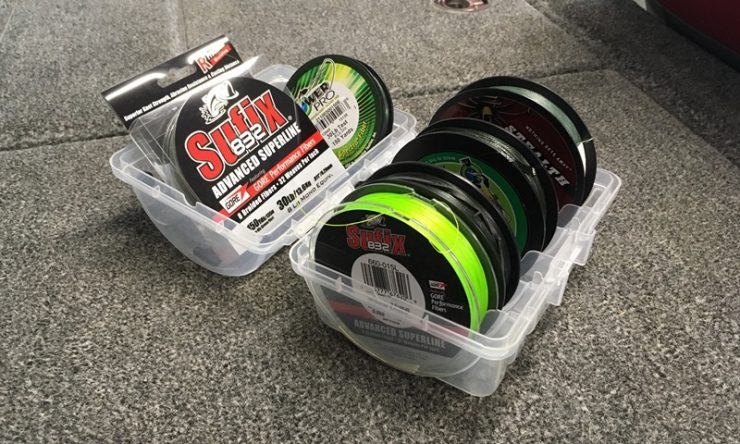







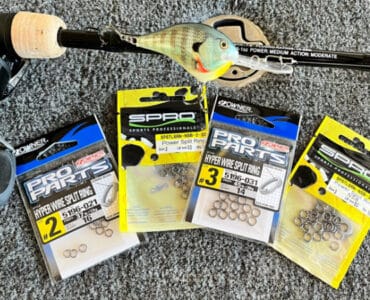
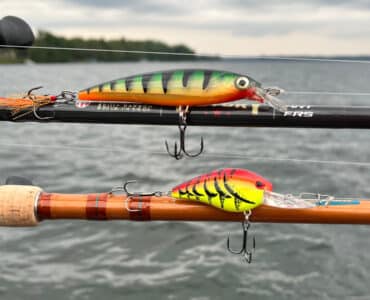
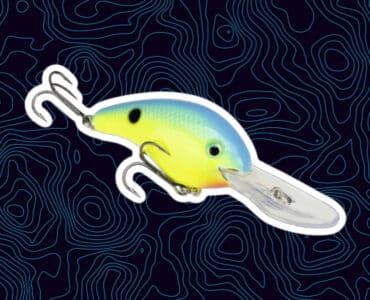
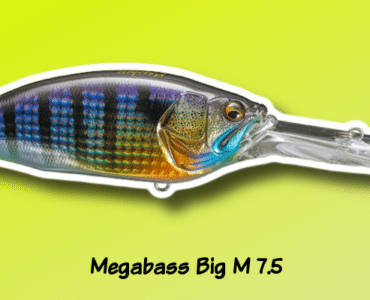








Have you ever tried stream fishing for brown trout using a spinning reel with a braided line? I’m considering trying it while casting a #13 floating Rapala upstream. Do you think using a moss green color with a mono/fluoro leader would work without alerting the fish? Any input would be appreciated. If not I’ll let you know how I did sometime in the middle of May. Thanks for your informative reviews.
I’ve never stream fished for Brown Trout, but I think a light mono leader with small diameter braid main line could work. Fluoro will sink, which is why I suggest mono.
Hi, I have 3 rod and reel baitcasters that I use the most. I wanted your opinion on which one I should use top water bait, superfluke, and Texas rigged worms on. Also what lb. braided line I should use for each.
Thank You!
1) Shimano Curado 200GH 7.2:1 gear ratio on 7’ Duckett Ghost MH rod.
2) Lew’s Mach II Speed Spool SLP 7.5:1 gear ratio on 7’ Mach II speed Stick MH fast action
3) Shimano Curado 200K 6.2:1 gear ratio on 6’ 10” Duckett Medium
Robert, my thoughts on your setups:
1. Texas Rig: 20-30lb braid depending on the severity of the cover.
2. Super Fluke: 20lb braid
3. Topwater: 20lb braid
With that said, I’d encourage you to try fluorocarbon for the Texas Rig, and regular old Mono still works great for topwater baits.
How is line twist memory etc…with the nano?
It’s pretty forgiving actually. I think alot of pros have been using it for their drop shot main line for that very reason. Just be sure to tie a good knot…it’s a very slippery line.
Have you tried Berkley Nano? It only comes in up to 10lb. I have been using it on my spinning reels for a couple of years. The Ultra light uses 4lb. Previous line was 832. The Nano casts noticeably better. Neither gave any trouble with bird’s nests or tip wrap ups – as long as I did my part avoiding line twists.
Yep, Nano is pretty good for the light test lines like you said.
My question is,
I have 20lb Berkley and Spiderwire ( depending on rod and reel set up ), that I use with 4-8′ 12lb fluorocarbon leader. I haven’t had any problems with casting, bumping off the bottom, etc…..but what is the largest size bass I could catch before I need to worry about snapping braided line? I know both can withstand a lot of pull before that point….but haven’t seen any articles that address this?
You’d break your leader or the connection knot first. And it depends on how good you are with the drag system on your reel. Little kids catch big bass on their Snoopy and Barbie poles because they have loose drags and lighter action rods.
I’ve fished with powerpro moss green 20 lb and no leader or with flouro leader in the 10-20 range as I use the same setup for finesse bass fishing with great success in the PA creeks and streams for trout. this year I just setup an ultralight with the daiwa stealth grey in 10lb braid. the nice thing about it is you get thin diameter line, good spool capacity and never have to worry about loosing a fish because you run weak 4 lb mono on the 1000 series reels.
I haven’t had a chance to test it out, how are you liking it?
What braided line would you recommended for trolling for northern pike
Hard to beat PowerPro, it’s a tough line and less prone to fraying in my experience.